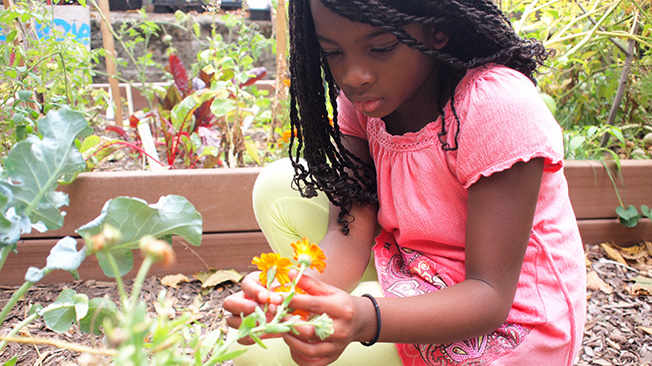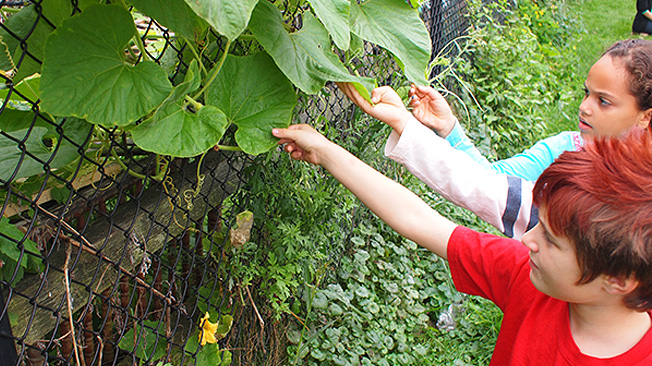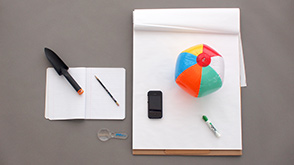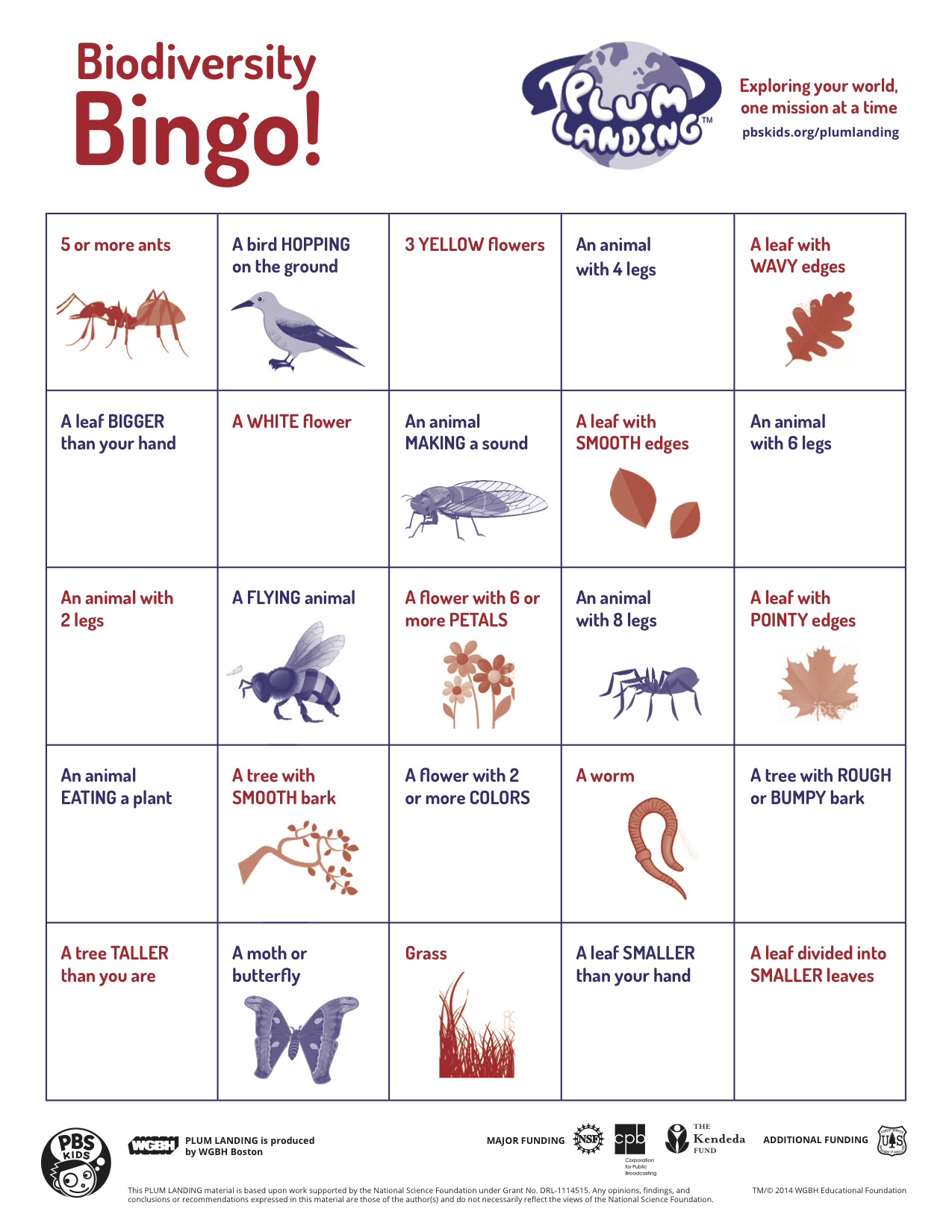Biodiversity Bingo
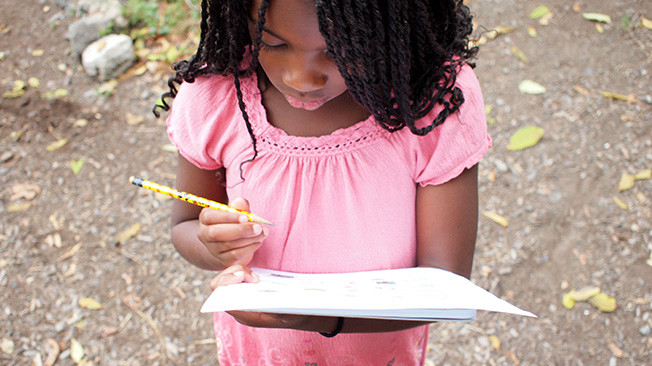
What Is This Activity?
How many different kinds of plants and animals live in your neighborhood? You might be surprised by the answer! In this scavenger hunt activity, kids explore and document neighborhood diversity.
Introduction
-
-
00:00
What Are Kids Learning?
- Biodiversity is the variety of living things in a given place.
- There are many different kinds of living things in any area, and they exist in different places on land and in water.
How Do You Get Ready?
- Read the activity and gather the materials.
- Scout out places where this activity will work well, such as a neighborhood park, schoolyard, or even a walk through the neighborhood.
- Notice what kinds of living things (plants and animals) you find and where you find them.
- Troubleshoot any safety concerns (traffic, poison ivy, sharp objects, etc.).
Warm-up 10 minutes
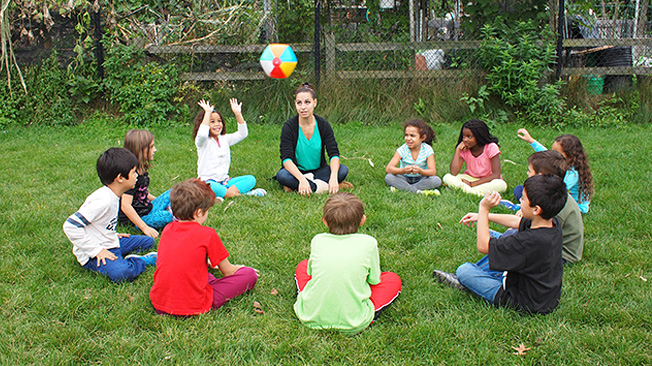
Gather the kids in a circle and explain the rules of the game ''hot potato'': players quickly pass a beanbag or ball around the circle. But in this version, challenge kids to name a plant or animal they saw on their way to your program today before passing the ball to the next player. To extend the challenge, tell them they can't repeat any living things already named.
To start the game, say the name of a living thing you saw today, and pass the ball to one of the kids. Set a timer for one minute and jot down each organism the kids identify on a flip chart.
After one minute, say ''STOP!''
Ask:
- How many different living things did we, as a group, name today?
- What word do people use to describe the variety of different plants and animals living together in a place?Biodiversity is the variety of living things in a given place.
- Do you think we have biodiversity right where we live?Yes! Kids often learn about biodiversity in exotic places such as rainforests, but don't always learn that biodiversity exists everywhere, even in cities.
- Where in our neighborhood do you think we might find the most biodiversity? Why?
Activity 40 minutes
Part A Bingo!
- Gather the materials, have kids pair up, and head outside. Show kids the boundaries you would like them to observe while you are exploring outdoors.
- Hand out ''Biodiversity Bingo!'' boards, field notebooks, and pencils.
- Quickly review the organisms on the bingo boards to be sure kids recognize each one. Kids might need help recognizing that ''animals with 6 legs'' are insects, such as ants, ladybugs, and bees; ''animals with 8 legs'' are spiders; and ''animals with 2 legs'' can be either birds or people.
- Explain how bingo works: as they explore, they cross off each item they find. When they have crossed off five in a row, they yell ''BINGO!''
- Send kids off to explore the outdoor area.
Circulate among the groups. You might need to show kids how to look for some of the items. Get down on hands and knees to peer into cracks in the sidewalk or between blades of grass. If you have a place where kids can dig in the ground, show them how to gently turn over the soil to look for worms or other organisms.
When kids have completed their boards, head back indoors or have kids sit in a circle on the ground outdoors.
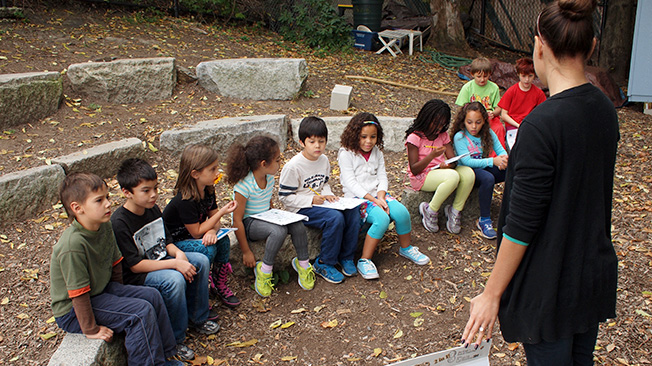
Part B What Lives Here?
- Hang an unused bingo board at the front of the room or, if you are still outside, on the flipchart.
- Go through each item on the board and have kids raise their hands if they found it.
- Cross off each item kids have identified.
- Compare the bingo board with the list you made while kids were playing hot potato. How do they differ? Where do they overlap?
Have kids talk about what they found.
Ask:
- What was the easiest thing to find? Why might that be?
- What was the hardest thing to find? Why?
- Is there anything on the board that nobody found?
- Is there anything else we should add to this board? Why?
Wrap-up 10 minutes
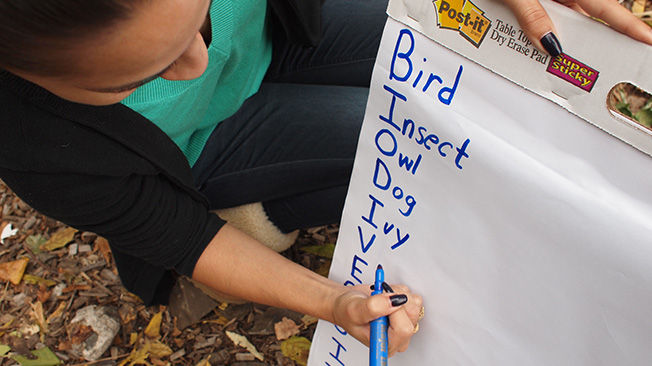
Write the word ''BIODIVERSITY,'' in all capital letters, vertically on the flip chart or on the wall of your building with chalk. Have kids suggest the name of a different living thing for each letter. Challenge them to use the names of animals and plants they have just identified. Encourage them to think broadly and creatively, using adjectives and alliteration if they can, especially if certain letters are difficult for them.
Here are some examples of plants or animals common in many regions, should kids get stuck:
B: bug, bird
I: insect
O: oak tree, orange flower
D: dog, dandelion
I: ivy
V: violet
E: earthworm, elm tree
R: raccoon
S: sparrow, salamander, snake
I: inchworm
T: tree
Y: yellow flower
Explore Some More
Biodiversity Bookkeeping
Tell kids to imagine they are making a nature guide for your neighborhood. Have them make a detailed drawing of one of the plants they crossed off on their bingo cards. What color are the flowers? How many petals do they have? What color are the leaves? Are they smooth? Hairy? What size and shape are the leaves? Does it have seeds? When kids are done, have them trade drawings with a partner. Can they identify the plant their partners drew? Help kids identify them with a regional or local field guide. The Arbor Day Foundation has an online tree identification field guide as well as a tree identification iPhone app. The National Audubon Society also publishes a variety of online nature guides and apps as well. Collect kids' drawings and assemble them into a group booklet.
Beautiful Bark
Explore texture and pattern in trees by making bark and leaf rubbings. To make a bark rubbing, place a piece of paper on the bark of a tree, then gently rub the long side of a crayon (with the wrapper removed) on the paper. For a leaf rubbing, collect leaves that have fallen from a tree. Place a leaf under a piece of paper and gently rub the paper with the long side of a crayon until the shape of the leaf shows up. Have kids trade rubbings - can they identify the trees their partners used by looking at the pattern on the paper? When you return indoors, tape the bark and leaf rubbings to a wall to make "trees" in your classroom.
Diversity Decorations
Have kids collect leaves, acorns, twigs, and any other natural items that catch their eye (be sure that they collect only plant material that has fallen to the ground and that they do not pick live plants). Back indoors, hand out paper, glue sticks, and other craft supplies. Have kids make the base of a wreath by folding an 8 x 11" piece of paper in half, cutting a large half-circle along the edges, then cutting a smaller half-circle along the middle of the fold (when they open the paper, it should look like a ring). Have kids decorate the paper rings with their collections, making a nature wreath they can take home.

